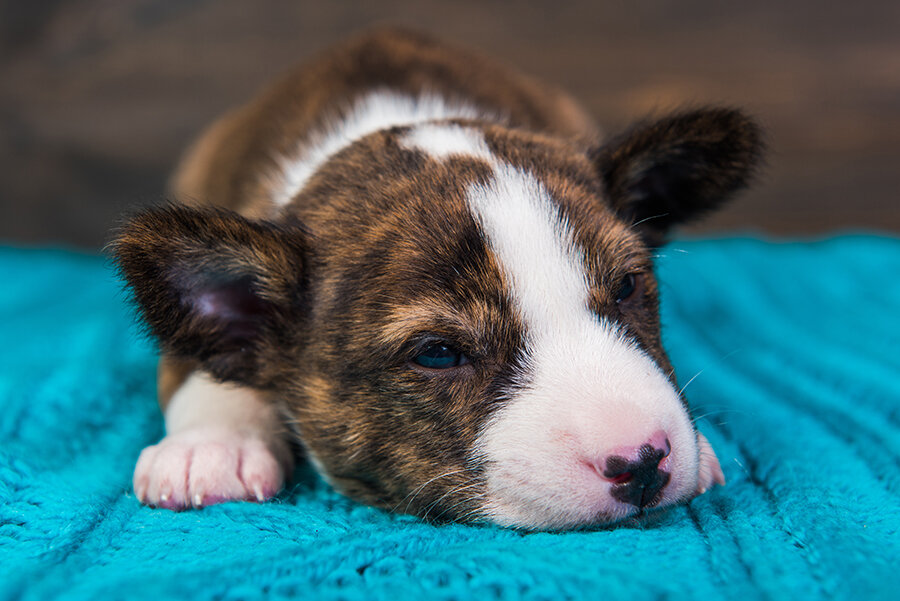Protect Against Parvo: What Every Dog Owner Should Know
Parvovirus is especially dangerous for puppies. Photo from AdobeStock
Few joys in life match that of bringing home a new puppy. But your cuddly new friend looks to you for protection and nothing is more important than making sure he has all his vaccinations - especially the one to prevent Parvovirus, which can quickly cause suffering or even death.
Parvo is dangerous for dogs of all ages, but especially for puppies. It is highly contagious, so please keep your puppy at home and away from other dogs until he or she can be fully vaccinated by a veterinarian. The full series of puppy vaccinations will require two to three visits to a veterinary facility spaced several weeks apart. For low-cost shots, check with pet food chains or your local animal shelter. We know you love your puppy so be sure to vaccinate right away!
What Is Parvo, and Why Is It So Dangerous?
“Parvo” is short for the disease process caused by the canine parvovirus. The dogs most at risk are young puppies.
Parvo is transmitted through direct or indirect contact with the feces of an infected dog. Transmission may occur from dog to dog, from a contaminated human to dog, or from a contaminated environment to dog.
The virus persists in the environment for a relatively long time - up to several months indoors and outdoors.
Common household cleaners are not necessarily effective to kill the virus. Bleach at 1:30 dilution will work on surfaces, but NEVER attempt to give or apply bleach to a dog or puppy by ANY means.
If your dog or puppy develops Parvo, he or she will become ill approximately one-half to one and one-half weeks after exposure. Symptoms of the disease include lethargy, lack of appetite, fever, vomiting, and diarrhea (often bloody). An infected animal may shed the virus, spreading it to other dogs or puppies even before it appears ill.
If not treated, your dog may die within two to three days of showing signs of illness. See a veterinarian immediately if your unvaccinated puppy or dog develops any of the above symptoms.
What Happens to a Dog with Parvo?
Pathogenesis is a medical term meaning how a disease develops in a body.
In the case of Parvo, the virus attacks a dog through rapidly dividing cells, primarily in the intestinal lining and bone marrow. Damage to the intestinal lining leads to fluid loss, electrolyte imbalances, and malnutrition. The damage to the intestinal lining can also allow gut bacteria to pass into the bloodstream, creating sepsis, which can lead to organ failure. In addition, damage to the bone marrow can cause low white blood cell counts, harming the ability of the immune system to fight infection. Dogs or puppies infected with Parvo become seriously ill and may die from severe dehydration and/or septic shock.
How Can My Vet Diagnose Parvo?
Parvo is typically diagnosed through fecal testing in the vet’s office, sometimes accompanied by a blood test to determine whether a low white blood cell count is present.
How is Parvo Treated?
There is no treatment for the Parvo virus itself, but infected dogs and puppies will receive supportive care to address symptoms such as dehydration or sepsis. They will typically be given intravenous fluids with electrolytes, anti-nausea medications, anti-diarrheal medications, antibiotics to address any secondary bacterial infections, and nutritional supports, such as liquid feeding via a feeding tube.
Most important, infected dogs and puppies will be isolated from other puppies or immunocompromised adult dogs to avoid further spread.
How Can I Prevent Parvo?
To prevent Parvo, first be careful to adopt or buy your puppy or dog from a sanitary housing situation. The kennel, store, shelter, or home should be in good, clean condition and the puppy and his or her littermates should not exhibit any signs of illness.
Once you’ve brought your puppy home, limit the risk of exposure until the puppy is completely vaccinated. Ideally, this means keeping your puppy at home where he or she is only exposed to adult dogs who have been fully vaccinated. Avoid visiting the dog park, pet stores, or kennels. If you must take your puppy out before his vaccinations are complete, keep him on a leash at all times and do not allow access to other dogs’ feces.
Finally, be sure to keep up with your puppy’s vaccination schedule. Typically, vaccines are administered every 3 to 4 weeks between the first 6 to 16 weeks of a puppy’s life. Booster vaccines may be required later in life so regular vet checkups are a must.
Vaccinations ensure your puppy’s health and your own peace of mind. Protecting your new friend against Parvo is an important first step in ensuring many happy years together.
The Palo Alto Humane Society cares about your new puppy’s health. Learn more about its veterinary help programs at paloaltohumane.org for information in English and Spanish.
